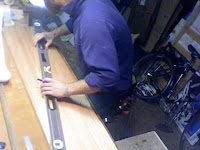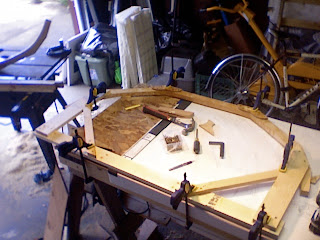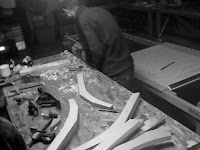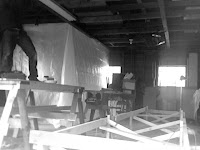This is a picture of a tree in the eveing light. It is a couple blocks from the boat shop, and I walk by it every day that I go there. For most of the year it's a fairly non-descript young maple tree, but for a couple weeks it really put on a show.
JD was here and now he has gone and I'm alone in the boat shop again. Three days is not long enough. However, we made a great leap in our progression toward actual boatiness. Two garboards are glued in place, and they'll soon be ready for the next planks to be attached.
[Warning! The next passage may contain indeciferable technical jargon. Read at your own risk.]
I still have to cut the overhang off of the port garboard in the stern, and then check the curve of the sheer side (top) of both garboards. Then I'll bevel the sheer edge of the garboards where the next planks will lie and we'll be ready to rock again. I anticipate the beveling taking some time, and I need to sharpen up the planes again, but all in all things are moving along.
I won't be in the shop for a few more days as I'm working up at my mom's house, putting in some new windows, but maybe I'll get in there this weekend if Abel doesn't have any work for me.









